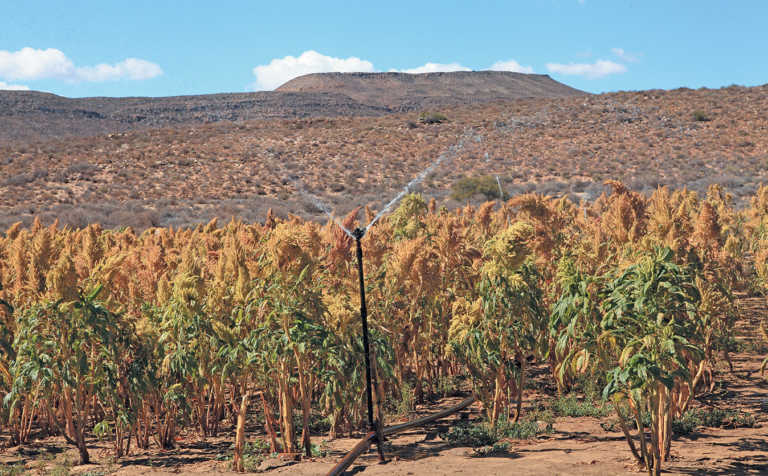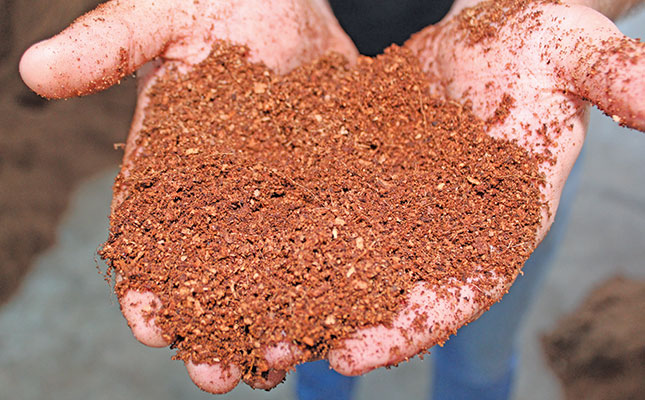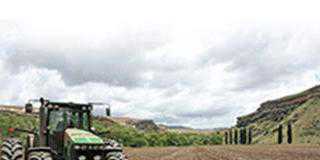
Photo: Glenneis Kriel
Fifteen years ago, farmer Gerrie Nieuwoudt was given amaranth seeds by a man looking for farmers to grow the crop locally, with a view to eventually start exporting the grain to Europe.
Knowing nothing about the crop, Gerrie asked his friend Paul Schlechter, who worked as a manager on a farm near Clanwilliam, to plant the seeds in his farm garden. The results were surprising.
“With hardly any inputs, the seed produced plants that flourished like weeds,” Gerrie recalls. “Paul harvested some of the seed and returned it to me. We didn’t experiment with [the food potential of] the seed, though, because we were totally unfamiliar with it back then.”
Gerrie placed the amaranth seeds at the back of a cupboard and forgot about them.
At that time he was producing a range of agricultural products on his farm, Kleinhoek, situated between Doringbos and the Biedouw Valley.
Little success came from these crops, however: watermelons suffered bruising on their way to market and coriander was sensitive to the brackish farm water.
In spite of the carrying capacity of the region being low (around 8ha per small stock unit), Gerrie attempted small-scale sheep farming, until farmers in the region started suffering losses from jackal predation. He exchanged the sheep for cattle, but that quickly came to an end when leopard arrived on the farm.
Then, last year, Gerrie spotted the forgotten jar of amaranth seeds in the cupboard, and began researching the crop on the Internet.
“My online searches revealed that amaranth is native to Central America and was grown by the Aztecs more than 6 000 years ago. Today, it’s cultivated in various parts of the world, including China, India, Africa and the US,” he says.
Increasing popularity
World demand for amaranth has sky-rocketed since the 1970s, due to a growing awareness of its health properties, including that it is gluten free. The grain can be milled into flour and the leaves can be eaten like greens.
In addition, the seed can be popped like popcorn and the oil extracted.
Gerrie also learnt that amaranth is classified as a ‘pseudo grain’ because it comes from a broad-leaf plant, whereas most grains, such as wheat and rice, are produced from plants in the grass family.
Amaranth grain currently sells for between R120/ kg and R170/ kg in health shops. Gerrie estimates that it would cost more than R2 000/ kg to import seed. Doing this, however, could be risky due to the possibility of seed contamination.
Crop trials
Gerrie was looking for a relatively hardy crop that was resistant to soil salinity. Recalling his experience with watermelons, he also wanted a crop that would be easy to transport, and not be prone to bruising or other post-harvest injury. He was convinced that amaranth met all the requirements.
Following his research, Gerrie decided to test the crop on 8 000m² of his farm. The Dr Kenneth Kaunda District Services at the North West Department of Rural, Environmental and Agricultural Development donated 2,1kg of Amaranthus cruentus seeds to him, and
crop solution company, IntelliGro, supplied fertiliser.
The A. cruentus, A. hypochondriacus and A. caudatus species are internationally recognised grain-producing species, while there are also cultivars better suited to the production of leaves.
“I didn’t expect to harvest anything, but will most probably produce close to the international industry norm of 1 000kg of seed/ ha,” says Gerrie. He established that the best planting time would be between mid-September and the end of October, as his farm is situated in a winter rainfall area.
Gerrie stresses that he is a farmer and not a scientist, and therefore his observations are applicable to his trial only.
Based on the results of analysis, the nutritional requirements of the crop and climatic conditions in the region, Pieter Saaiman, crop solution specialist at Intelligro, advised him to use a slow-release NPK fertiliser. Pieter says that his company was pleased to be involved in the project because they recognise the importance of having alternate crops available in the Clanwilliam region.
“We’re always excited about new developments that may help boost farmer income, especially if these might result in reduced water usage,” he says.
About three weeks after germination, seedlings were thinned to a 1m inter-row spacing, and 25cm to 30cm intra-row spacing, which amounted to about 33 600 plants/ ha. “I used a low planting density to prevent competition and the overshadowing of plants,” Gerrie explains.
The first batch of seed was planted too deep in the soil and did not germinate, so Gerrie sowed the new batch with a pepper pot and covered them with a thin, 1cm layer of soil.
Although soil on Kleinhoek is generally fairly sandy, there are areas of silt where soil compaction makes it nearly impossible to penetrate the soil. Seedlings planted on these patches struggled to establish themselves, unlike those planted on more friable sandy soils.
Irrigation
Like almost all plants, amaranth performs best under irrigation, but it is well-known for its ability to survive under water-stressed conditions.
“I know of Mexican farmers who lost all their maize during droughts, but managed to harvest amaranth on the same land,” says Gerrie. ”Amaranth has a well-developed taproot system and highly efficient photosynthetic pathways, and both help make it drought-tolerant. Under extremely dry conditions, plants may temporarily wilt completely and then revive after receiving water.”
AJ de Klerk, production consultant at Agrinet, supplied Gerrie with pumps free of charge for the trial. Gerrie experimented with drip irrigation, micro-sprinklers in every second row, and overhead sprinklers, and believes that options two and three produced the best results.
The seedlings were given 14mm to 15mm of water twice weekly for four months. Because growth was uneven, he stopped irrigating when most plants started bearing seed.
The plants continued to grow well after irrigation ceased. Although he cannot compare his water usage with that of maize farmers in the area, he knows of one farmer near Lambert’s Bay (63km away) who irrigates his lands almost nonstop, and thus suspects that amaranth’s water requirements are lower, depending on climatic conditions and soil type.
“I hope we can further develop the market for amaranth in South Africa and, in the process, significantly expand production. The crop promises to enhance food security because of its low water requirements and high nutritional value.”
Email Gerrie Nieuwoudt at [email protected].













